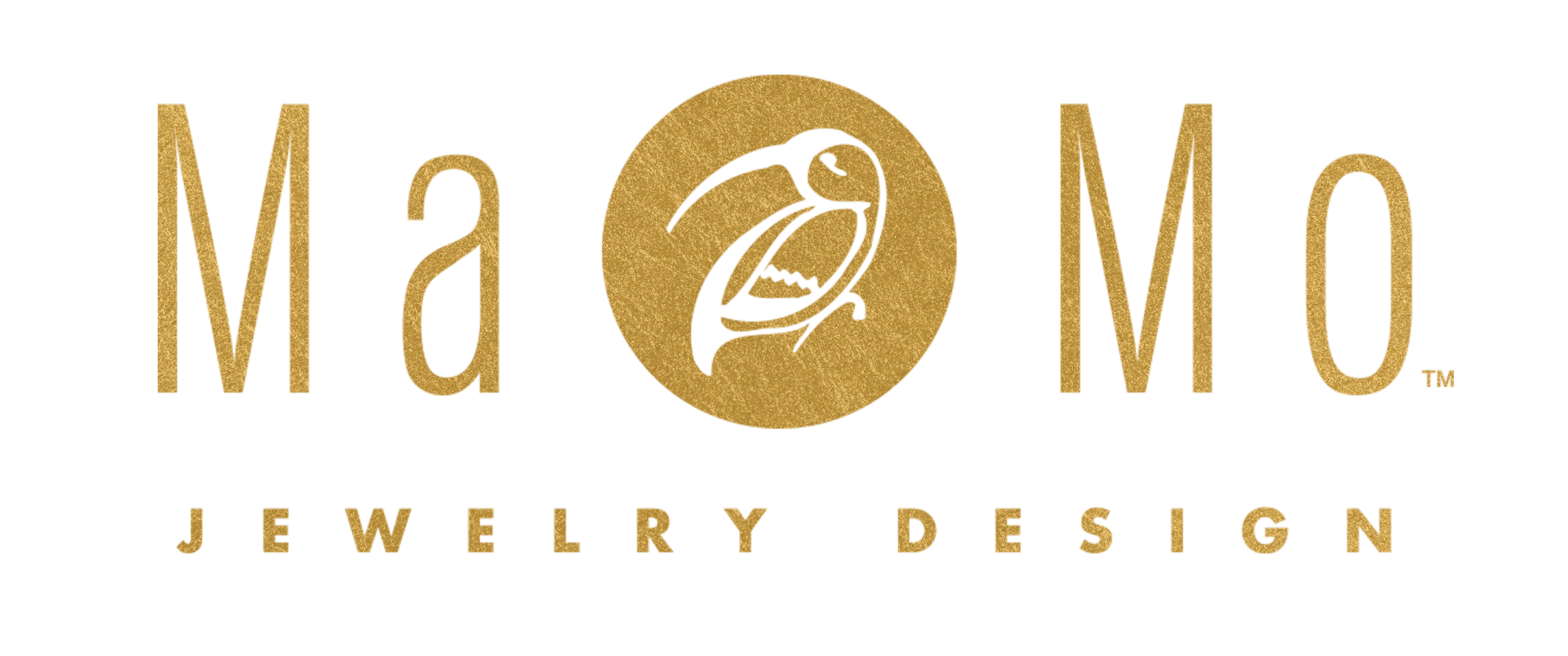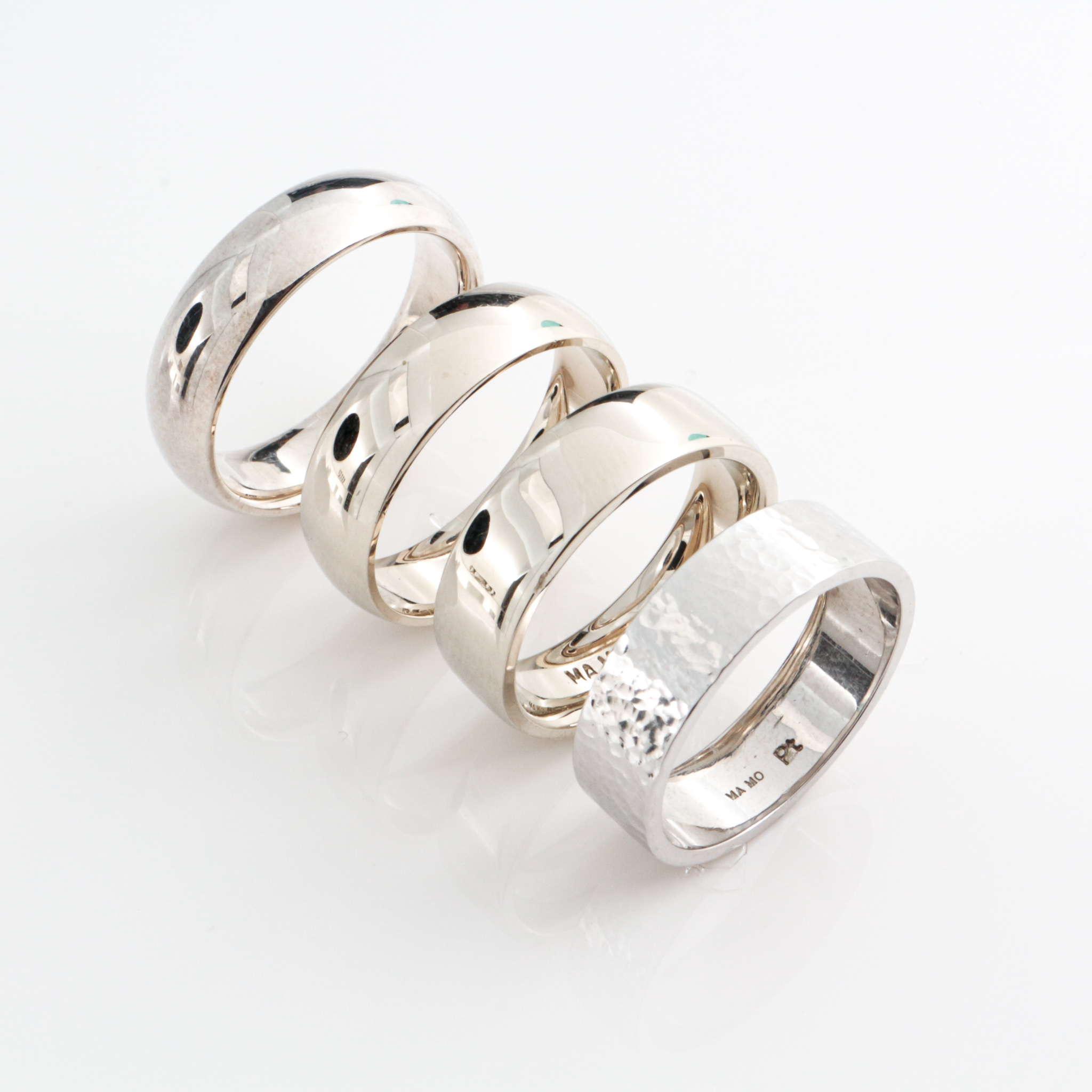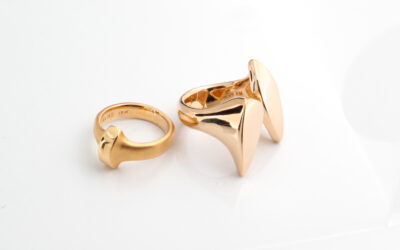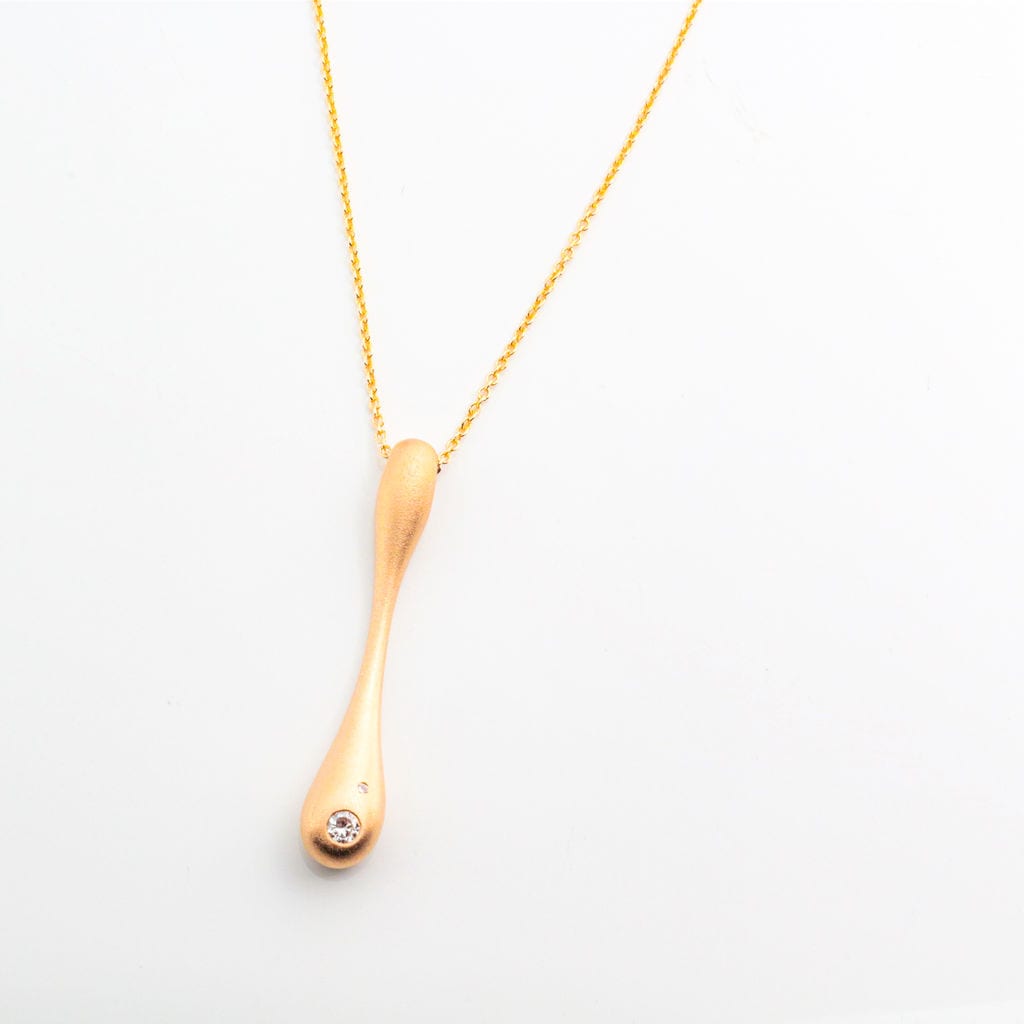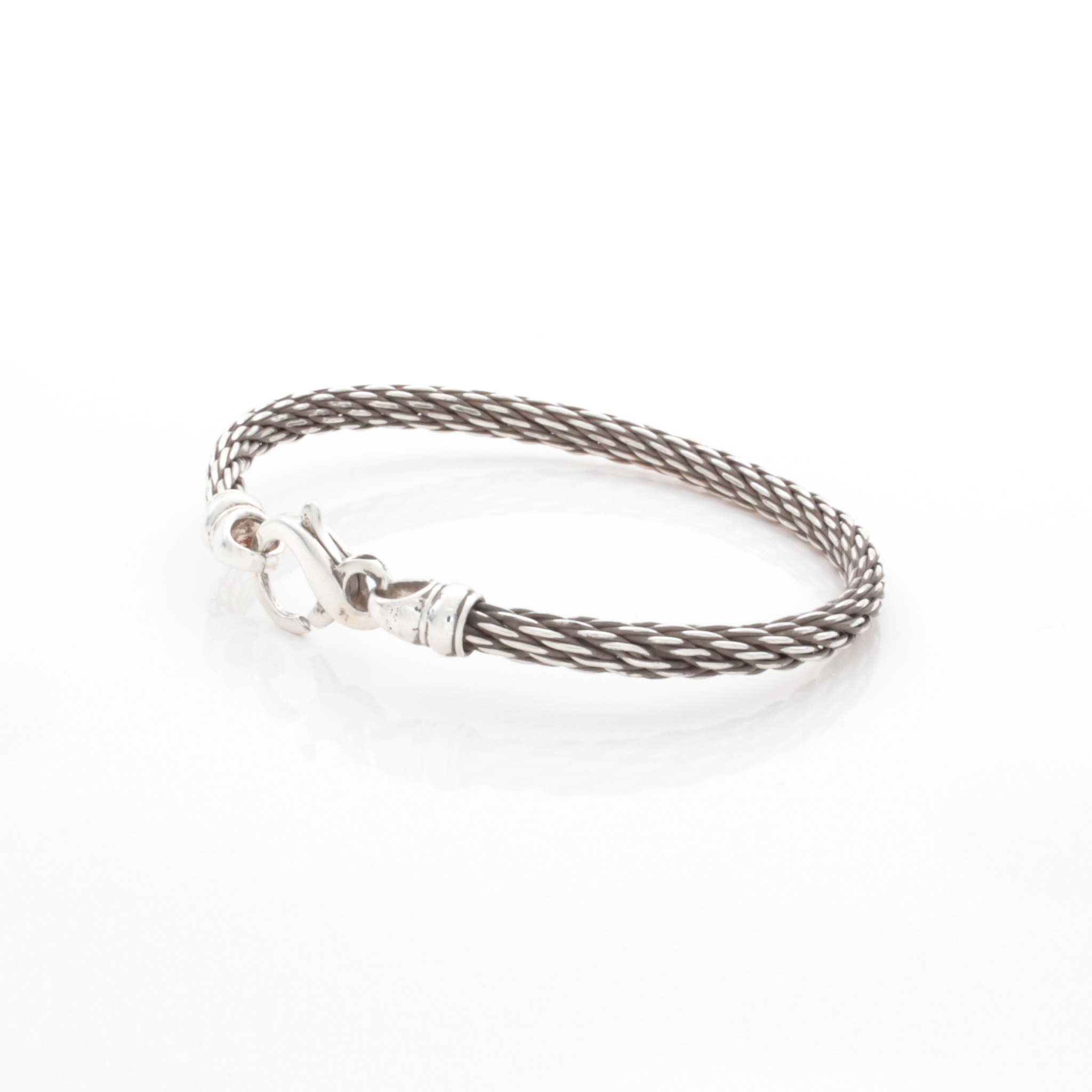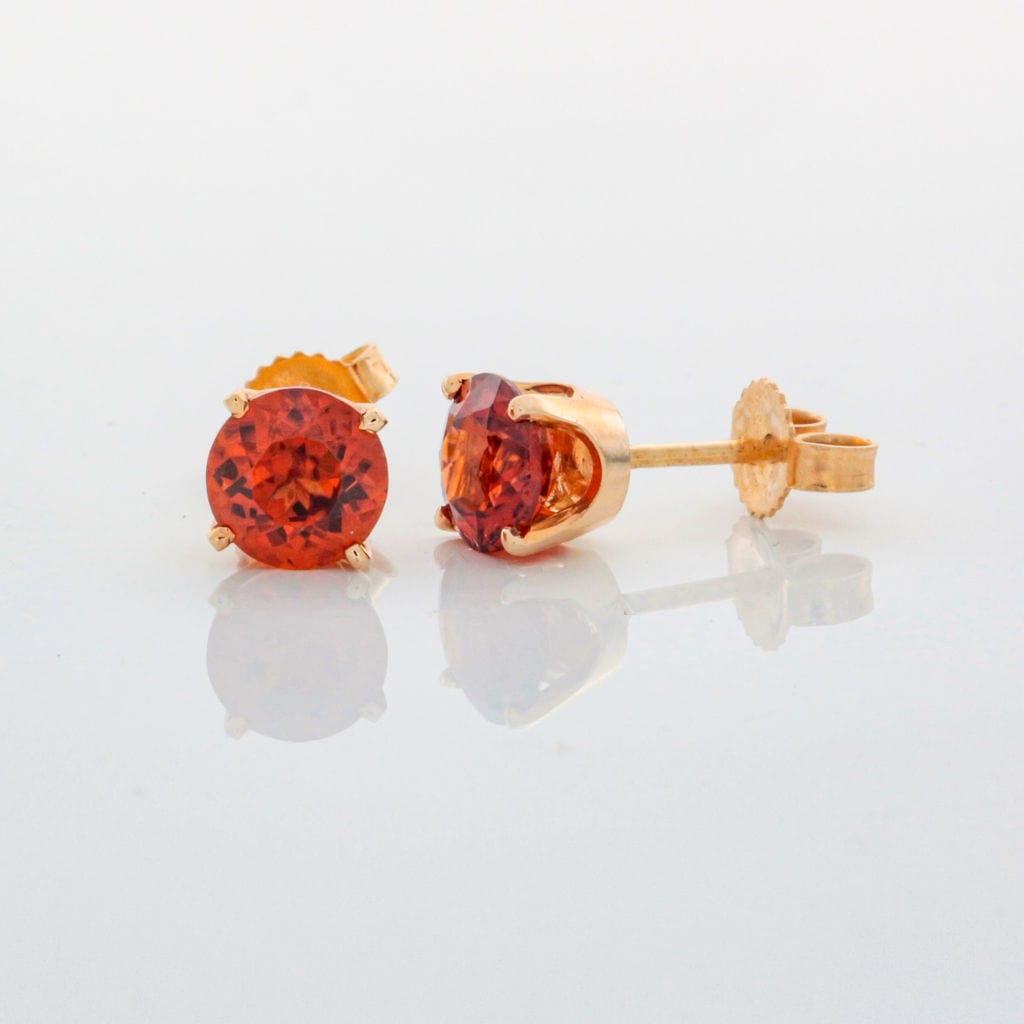The rings above show left to right, Sterling Silver, 14K white Gold, 18K white Gold, and Platinum.
We use several white metals in our creations and wanted to cover the differences between the three. “White metals” is a broad term used to describe a metal that is a lighter metallic color. The three used are Noble metals (metallic elements that exhibit high resistance to oxidation, wear and mailability), Gold, Silver, Platinum.
White Gold:
Most people understand Gold, at least the color itself. In it’s pure form 24K Gold has no variation of color and is very soft. By alloying, adding a mixture of metals (nickel, palladium, silver) it works as a whitening agent. Our standard 14K white Gold (58.5% pure Gold) and 18K white Gold (75% pure Gold) gives the jewelry a warm white that is flattering on many skin tones. It is strong enough to securely hold stones and takes a high polish. On a practical note, a jewelry standard of 14K or 18K can be serviced around the world.


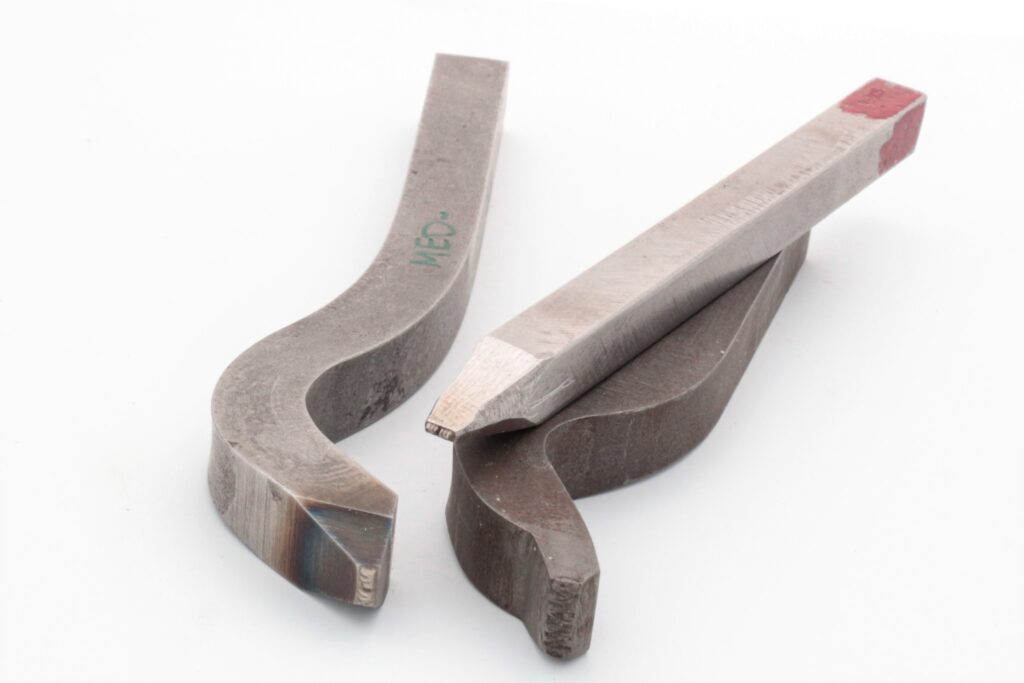
Strict U.S. laws govern metal purity and labeling. Seeing a 14K or 18K stamp you can be assured of purity within .003%.
Shown here a trio of Ma Mo trade stamps.
Silver:
The many benefits of Silver used in jewelry can be the reason why marketplaces around the world sell Silver jewelry. Sterling, 92.5% find Silver and 7.5% copper is most commonly found.
Valued higher than Gold at several times in history even though more abundant. Used in mirrors, its 90% reflectivity makes it the whitest of the Noble metals.
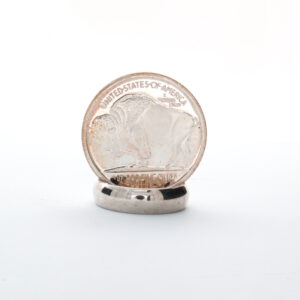
Its drawbacks are that it is soft, like Gold. The 7.5% copper hardens it but also allows it to tarnish. A patina can be applied or occur naturally enhancing the design. Silver can require more maintenance to keep it high shine.
Shown here a Fine Silver coin showing signs of Oxidation (Patina) resting on a Sterling Silver Band.
In our designs we choose the precious metal to best suit the piece. We will make a setting differently in Silver, being the softest of the three white metals. Extra material on a prong, a thicker shank can help wearability. A silver ring would be made with different tolerances then a Platinum ring. We choose Silver for designs with these factors considered. The affordability of Silver can allow more freedom to design.
Platinum:
The rarest and the king of the Noble metals. Its cool grey whit is hypoallergenic and non-tarnishing. It’s purity at 95% and unsurpassed durability makes it the top performer in use and wearing of fine jewelry. Due to its awesome traits Platinum jewelry can be made with thinner tolerances while retaining its strength and durability.
It’s high melting point, specialty tools and extra time to finish this special metal make it the least inexpensive choice. Platinum’s drawbacks can be the financial cost. Some may argue the dense Platinum metal over 30% more weight or heft can be a drawback.
Ma Mo feels that the added weight is a benefit. Feeling substantial and meaningful when worn.
Platinum is used only in the most special of pieces, heirlooms and engagement rings.
For those who’ve known us from our past custom work you may have seen us use Palladium, Fine Silver, Sterilium, 20 Karat, 22Karat, and 24Karat. We have experimented over the years however, by using these three white metals we strive to keep consistency and remain serviceable in all finished wearable pieces.

